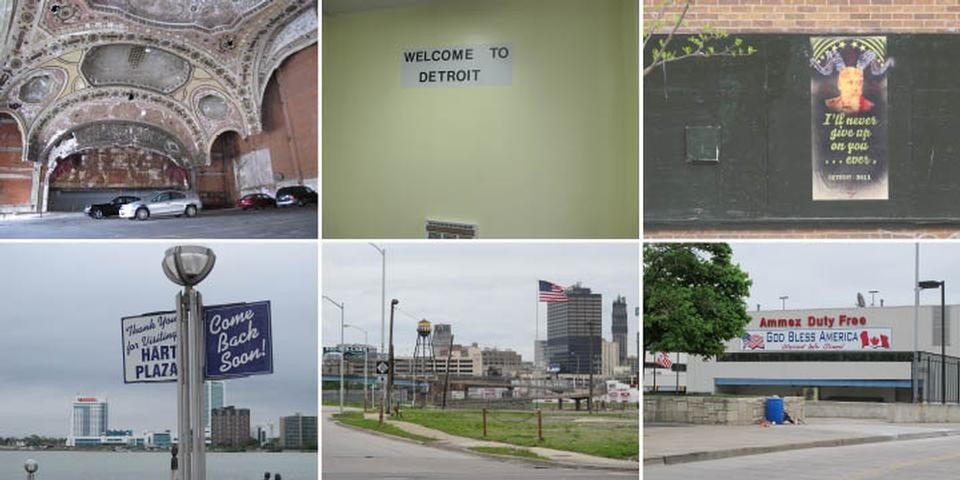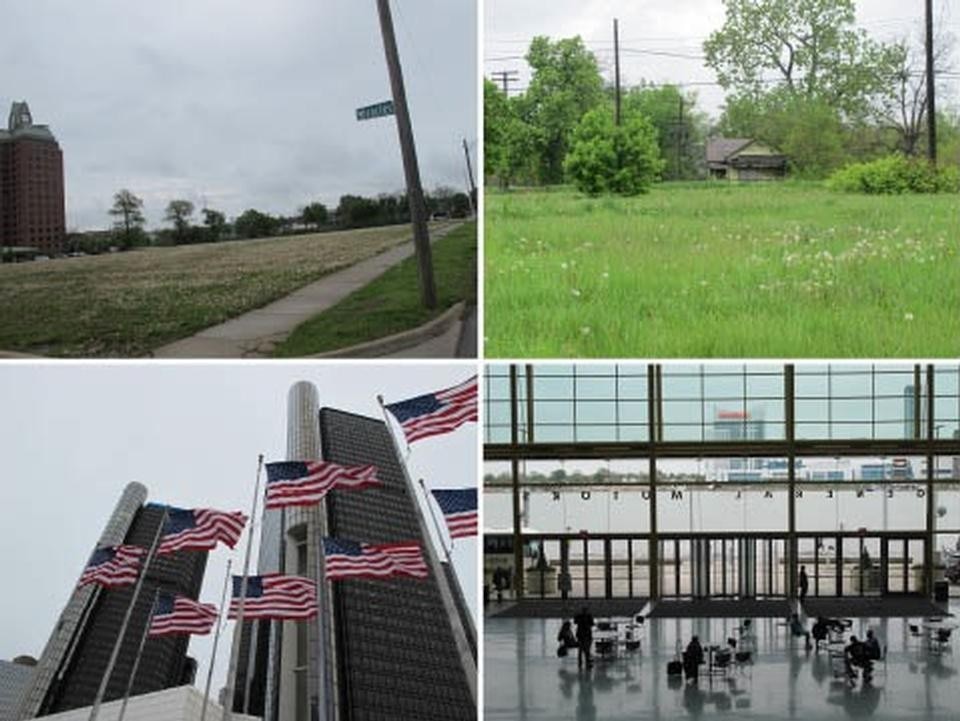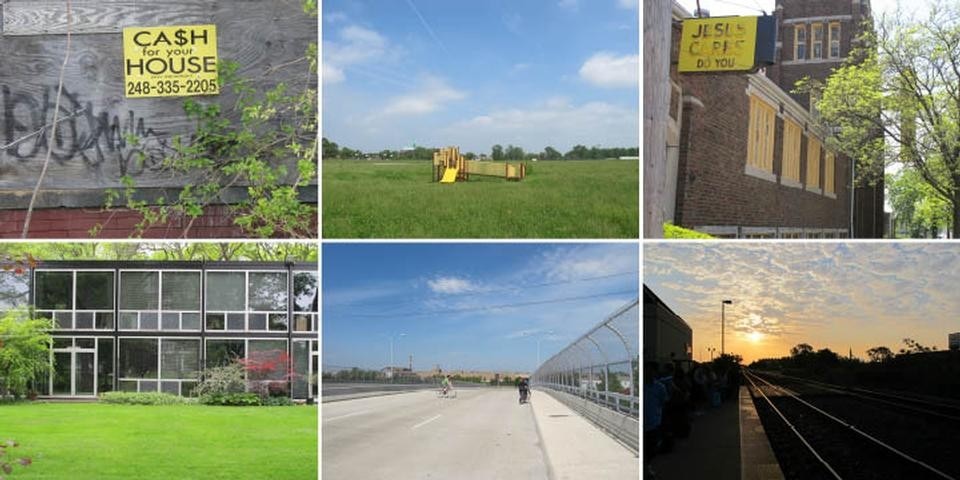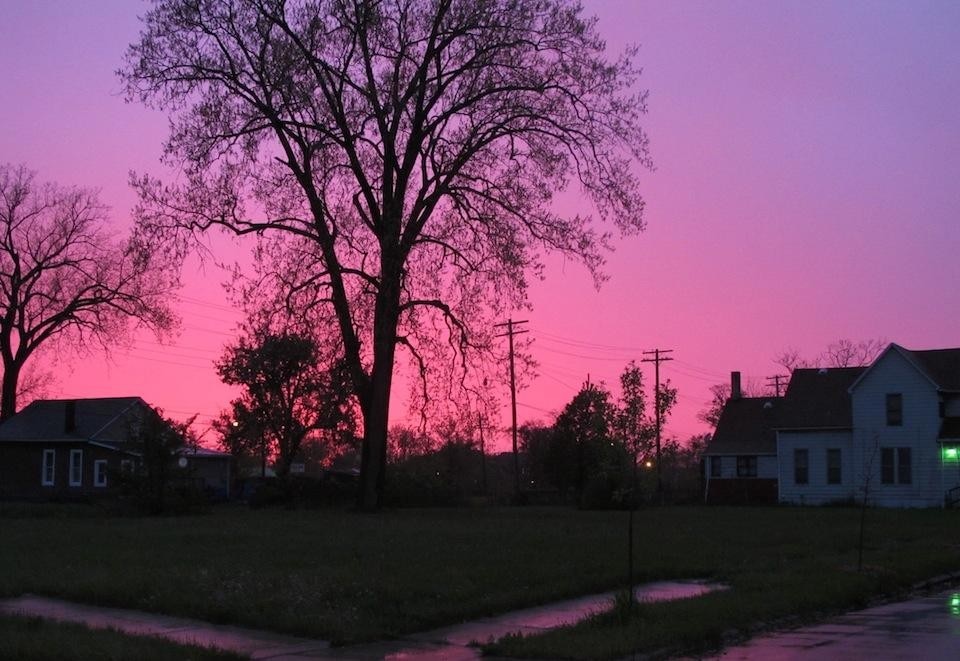So much has been said—and there's still so much to say—about Detroit that it's difficult to know how to get going. But let me start by saying that Detroit is a beautiful city. It's a city with heart and soul. It's one of the most incredible, confusing, contradictory and overwhelming places I've ever been.
Everything you might have read, or think you know about Detroit is probably true in some way or another. There's decay, dereliction and staggering ruins. Then there's the music, the carless 8-lane roads, and all that history. But to think of Detroit as graveyard for the industrial city would be a mistake. It is but one side of the story. It's a city of extremes but no one of these extremes seems to dominate; I've never been anywhere like it. I feel like I've got a huge responsibility to tell its story fairly. I don't know where to start. Let me try and explain...
So I'd decided to come to Detroit. The world (me included) seems to have this grim fascination with the Motor City. It had been like a siren calling, and was the focus of my journey to the States in the first place, a fabled Shangri-La of urban apocalypse. Lauded as a spectacle of a city that used to represent the future, but has now fallen on hard times, it's the case study to end all case studies about post-industrial plight. Detroit's tale is one that needs to be told, but without the tabloid sentiments and sensationalism it's attracted in recent years.
Many people I'd got talking to so far had expressed shock and concern that I'd even consider visiting Detroit. 'You'll get killed' they said, 'be careful'. It's clearly a city with an image problem, and one where the levels of hype and fear surrounding it have reached epic proportions. People told me that 'no-one visits Detroit', especially not for two whole weeks. It might not be everyone's idea of a holiday destination, but also I got the distinct impression that it was a case of out of sight/out of mind. Detroit might have looked like the whole country felt during the credit crunch, but no one wanted to see it. Also maybe no one really wanted to talk about it; about how it's possible to leave a city, in the richest country on earth, to essentially rot.
There have been a lot of seductive photographs of the city published in papers and glossy magazines. Photos of dead factories, photos of the famous abandoned Michigan Theatre, photos of a city on its knees. But it's pictures like these that really make me feel uncomfortable. It's this fetishisation and voyeurism that Detroit seems to have become notorious for. Welcome to disaster tourism, a holiday in other people's misfortune! The cracks are bigger, the people more disenfranchised, the bleak bleaker. Hyper-real like an apocalyptic Disneyland. I didn't come here to look around the dead factories, although you can't help but see them. This is somewhere where people actually live, it's not a zoo or a playground. And I think it's important to note that most of these people are black—it's not just the buildings that have been abandoned here, it's the people.
This city is a monument to capitalism, to the American Dream. Once upon a time this place was the envy of all America, if not the world. I think that's what makes it's current state so jarring, so unexpected. This city had made it. It's the logic of this rampant capitalism that gave Detroit its shiny new freeways, abundant cheap housing, office blocks and shopping malls—and ultimately to the jobs being shipped overseas. The logic that created the boom led to the bust.

Our train crawled into outskirts of the city painfully slowly, like some kind of funeral procession. As we crept past the abandoned houses, factories and block after block of grass where homes should be, it sunk in that we were finally here. I didn't really know how to feel, and despite having seen the pictures and prepared myself for what it might be like, I wasn't. I was totally overwhelmed. I've been to cities before where their purpose has been taken away, I grew up in Birmingham and lived in Sheffield for years, but here it just felt different. Maybe it's the scale of it? It's hard to articulate what it was like without slipping into huge clichés.
We stepped off the train into the station—a building best described as an excuse for a Portakabin, especially when compared to the grand former Michigan Central Station—and got into a taxi and cruised through the deserted streets in the pouring rain. My mind was immediately blown.
This city is planned on an undeniably grand scale, befitting somewhere that was once so prosperous. Broad avenues fan out from the distant cluster of art deco skyscrapers downtown. All roads lead to Rome, or at least to it's Detroit namesake—Campus Martius. The city is geographically vast, with what commercial activity there is clinging to the major artery of Woodward Avenue—cutting the city in two from Downtown, through Midtown to New Center and all the way to 8 Mile.
It's these avenues that eventually lead you out past 8 Mile Road to the suburbs. The advent of the motor car had not only meant prosperity and jobs for Detroiters, it also meant the city could spread—you could get from A to B much quicker on four wheels. Those that could afford to joined the 'white flight' of many families from racially mixed neighbourhoods to the more homogenised suburbs. The ones who remained were mainly poor and disenfranchised; the process only accelerated after the 1967 riots. So what are you left with? Well, mainly fear. Fear of crime. Fear of the city itself.
It's this fear that continues today. I experienced it myself whenever I mentioned Detroit to people I met before I arrived. But it's fear that seems to have really affected the way the city functions. There's hardly any people on the roads. You don't see children playing out. People come to work in the city, but have no relationship with its streets. This could be said for many American cities. You drive in to work from the suburbs, park the car in the garage, and then walk straight to your desk. There's no need to demystify the rumours of crime and danger. It's not tested. Your car acts as your own personal fortress to the city outside.
That's not to say that Detroit is actually some kind of urban Eden, that there's no crime. It'd be very easy for me to drop in, and then come back with this rose-tinted view of urban optimism and growing your own vegetables. Like any city, Detroit has dangerous parts, but it rarely felt dangerous, at least not in the way its reputation suggests. That said, we were told someone was shot at the garage next to where we were staying in previous weeks. I don't want to paint it as some kind of Beverly Hills.

Southwest back down Gratiot Avenue and to the Renaissance Center. Sitting on the riverfront on the east side of the central business district, it's a building that was meant to be another future for Detroit, but again one that didn't come good. It's horrendous: a towering fortress of concrete and glass. Utterly unnavigable and shielding itself from interacting with the city below it. It's verging on anti-human, but gives the illusion that Detroit is all car showrooms, Starbucks and boutiques. I can't help but feel that you'd have a hugely warped view of the city, not only in a literal sense, if you were staying in the Marriott here. Built in the 1970s by architect John Portman, this city within a city of offices, shops, a hotel and a cinema was conceived and financed by the Ford Motor Company to herald the rebirth of Detroit. Following General Motors moving their headquarters here in 1996, the centre now also includes a winter garden on the riverfront, complete with plastic palm trees. It's abhorrent.
These contradictions continue to Lafayette Park just down the road. After days and days of the Detroit we all know and love, we came across an island of modernist perfection. Nestling in the shadow of downtown is an immaculate collection of Mies van der Rohe townhouses and apartments, apparently the largest collection of Miesian buildings in the world. People were picnicking. There was manicured greenery, meadow-like lawns and flower beds. This city just gets weirder. It was built after World War II to improve living conditions for one of the worst slums in the city, the graceful steel skeleton and glass of the apartment buildings soar up from the Mondrian-esque patchwork of townhouses below. It feels like an architecture holiday camp, frolicking in the middle of Detroit. Pristine and very surreal.
Staying in Detroit's 'up and coming' district of North Corktown just off Michigan Avenue, it's easy to feel like something really is happening here, that change is in the air. With a new hostel, restaurants and community gardens springing up where dilapidated houses and abandoned lots used to be. Artists are moving in, people such as the guys at the Imagination Station are making things happen. It's certainly inspiring, a frontier, but this is only one neighbourhood. The same goes for the Eastern Market, the only area of the city we saw that bustled for a few blocks and felt like a normal place. With all the will in the world I wonder whether this hope, this action, can actually give Detroit a new purpose and a new economy. Again, I'm flummoxed. I hope so, all this creativity is certainly a force for good, and goodwill, in the area; but I'm just not sure if it's enough.
In many ways the state of the city acts as a great leveler, everyone seems to be in a similar boat. In many cities you can avoid areas that are struggling and in decline. You can keep your blinkers on and live you little life and not have to be aware of it. But not here. It's impossible to miss. Maybe that's where the hope might come in? The fact that you have to face it head on? Find solutions and carry on with your life. It's the space, the potential.
It's this potential, this opportunity that's so exciting, and I guess what draws certain people here. People like the artists moving in, lured by the prospect of ludicrously cheap rents and space to think and to experiment. The now legendary possibility of buying a house for $100 is undeniably alluring. I think at one time I'd have been gagging to turn up and do something here. But having seen the reality of what it's like for many people in the city, I think I'd have to question my motives. What good can you do? What meaning can your work have, when people really want jobs and food rather than an art project? Who are you doing it for? Is it because you want to make a life there, or is it because it's cheap and cool?
In many ways the state of the city acts as a great leveler, everyone seems to be in a similar boat. In many cities you can avoid areas that are struggling and in decline. But not here.

But now to Los Angeles and sunny Californ-i-a. I'm going to be covering the biggest chunk of the country in one go. Going west (young man) through the mountains and deserts and plains. I can't imagine a more different place to go to compared to Detroit. Maybe they're both more caricatured than most cities? I'll be interested to see if LA does still match up to the dream that continues to draw people there.
Tom Keeley is an artist and writer whose practice investigates and celebrates the peculiarities of the built environment.


